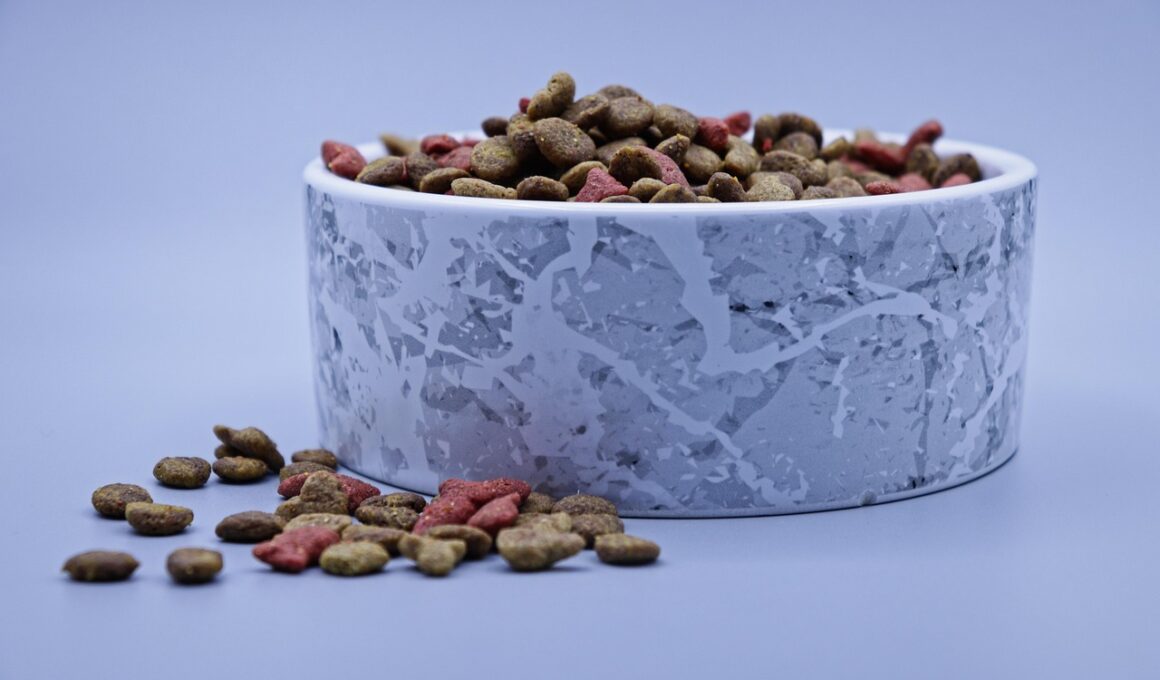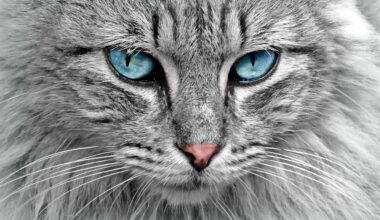Understanding the Role of Diet
The diet of a cat plays a crucial role in numerous aspects of its health, including behavior. Particularly, house soiling issues can arise from dietary choices that do not align with a cat’s natural needs. Cats are obligate carnivores, meaning they require a diet rich in meat. A lack of sufficient protein or essential nutrients might lead to gastrointestinal issues, leading to stress or discomfort, which can drive a cat to eliminate outside of its litter box. Proper hydration is also vital; insufficient water intake might result in urinary tract problems, making a cat more prone to developing house soiling habits. Owners must provide quality food that meets the nutritional requirements set forth by veterinarians and animal nutritionists. The texture and moisture of food can also affect how a cat digests its meals. Canned foods, for example, provide necessary moisture that promotes good urinary health. Additionally, recognizing any food allergies is important, as these can cause digestive disturbances, further complicating house soiling. It is essential, therefore, for cat owners to be diligent about their pet’s diet to mitigate house soiling problems effectively.
Another important consideration when examining house soiling issues is the importance of feeding frequency. Cats thrive in routines, and their gastrointestinal tract operates best when fed at regular intervals. If a cat is inconsistent with its feeding schedule, it may lead to irregular bowel movements, precisely contributing to accidents outside the litter box. Additionally, changes in diet should be gradually introduced instead of abruptly switching to a different food brand or type. Sudden changes can upset the stomach, causing both diarrhea and stress. This disturbance is something most owners may overlook, yet it is crucial to acknowledge that digestive health influences litter box habits. Consider monitoring how different food types affect your cat’s bathroom habits over time. Document any correlations between meal types, feeding frequency, and incidences of house soiling. Observing your cat can provide insights; if a particular food causes digestive upset, it should be avoided. Consulting with a veterinarian can extend to assessing your cat’s overall health, which includes understanding the impact of dietary choices. Tailoring the diet to support your pet’s individual needs is invaluable for fostering positive litter box behavior.
Hydration and Its Influence
Hydration is another factor that significantly impacts a cat’s urinary health and overall behavior. Well-hydrated cats are less likely to experience urinary problems, which can lead to accidents outside the litter box. Cats sometimes don’t drink enough water, especially if they primarily consume dry food. Ensuring your cat stays hydrated is thus essential for preventing house soiling. Integrating wet food into your cat’s diet is one effective strategy to increase moisture intake. Therefore, the right balance of wet and dry food can maintain optimal hydration levels while supporting urinary tract health. Moreover, providing fresh water daily is crucial. Cats can be picky about their water sources; some may prefer a flowing water bowl or fountain over a traditional bowl. Experimenting with different water sources and types can encourage your cat to drink more regularly. This small adjustment can significantly decrease the risk of litter box issues. Observing your cat’s drinking habits can also help identify any preferences or impediments. Keeping track of your pet’s behavior around water can illuminate factors that contribute to house soiling issues. Every detail helps build a comprehensive understanding of your cat’s dietary needs.
Another critical consideration is the impact of dietary ingredients on digestion. Certain ingredients, especially fillers or lower-quality proteins, can lead to digestive problems like diarrhea or constipation, both of which are common reasons for house soiling. Reading the labels on cat food is essential, ensuring that the primary ingredients are high-quality proteins with minimal fillers. Cats require specific amino acids that may not be present in inferior brands. It’s essential to choose foods formulated for your cat’s age, lifestyle, and health condition. For instance, kittens need different nutrition compared to older cats. Some cats may also be sensitive to grains or specific proteins. Owners can benefit from trial and error to observe which foods suit their cat best. Keeping a journal to log which foods lead to healthy digestion and which may result in accidents can be insightful. It’s highly recommended to consult with a veterinarian when troubleshooting diet-related behavior issues for personalized guidance. In summary, focusing on the quality of ingredients in your cat’s food promotes better digestion and helps prevent house soiling.
Behavioral Connections to Diet
The connection between diet and behavior in cats is often underestimated. Unbalanced diets can lead to an array of behavioral issues, including anxiety, boredom, and even aggression. Stress from dietary insufficiencies can lead cats to eliminate outside of their designated litter areas, resulting in house soiling problems. For example, a deficiency in certain nutrients can increase a cat’s stress levels, causing them to feel insecure and anxious. It’s essential to identify dietary stressors; observing your cat’s reactions post-meal can be informative. Dietary changes should aim to enhance overall mental well-being, just as they improve physical health. Cats are individuals; thus, a diet that suits one cat might not work for another. Being observant of your cat’s moods, energy levels, and responses to food changes can help identify any problematic triggers. Moreover, positive reinforcement through rewards when correctly using the litter box can strengthen good habits. Meeting every cat’s unique dietary needs is a proactive approach to preventing any negative behaviors stemming from inadequate nutrition. Each dietary decision can substantially affect behavior, reinforcing the importance of a tailored meal plan.
It is also vital to recognize that some house soiling issues may stem from health problems aggravated by diet. Conditions such as obesity can arise from overfeeding or unhealthy food choices, leading to mobility and comfort issues. Weight gain might hinder a cat’s ability to reach their litter box in time, resulting in accidental soiling. Regular check-ups with a veterinarian can help assess weight and overall health. Cats should have an optimal weight to promote fluidity in movement, making it easier for them to reach the litter box reliably. Therefore, managing their diet to maintain a healthy weight is crucial. Moreover, underlying health conditions like diabetes or kidney disease can complicate matters further. High-quality, prescribed food may be necessary in these cases to positively influence health outcomes. Making proactive decisions to manage a cat’s weight through dietary adjustments can greatly reduce house soiling incidents. Keeping an eye on changes in eating behaviors and adjusting accordingly assists not just in proper weight management, but also in the overall happiness and health of your cat.
Final Thoughts on Diet and House Soiling
In conclusion, understanding the profound connections between diet, hydration, and behavior is essential for cat owners battling house soiling issues. A nutrition-focused approach can prevent many problems stemming from digestive distress, stress, and obesity. By ensuring a balanced diet, consistent feeding schedules, and proper hydration, cat owners can create a conducive environment for litter box habits. Monitoring a cat’s preferences, responses to feeding changes, and any occasional behavioral shifts will lead to better management strategies. Above all, it remains imperative to consult with a veterinarian for personalized dietary recommendations, especially for those addressing specific issues. Veterinarians can offer invaluable insights into your cat’s unique nutritional needs, suggesting modifications to enhance litter box success. Establishing a nourished cat often leads to a relaxed, consistent feline that respects litter box etiquette. Owners play a crucial role in providing suitable dietary options while observing and understanding how their pets respond. With this knowledge, a happy and healthy cat environment is achievable, significantly reducing or eliminating house soiling issues for good. Make proactive dietary choices today for the well-being of your furry family member.
Ultimately, understanding the holistic role of diet and its impact on feline behavior is a key step in addressing house soiling issues in cats. A comprehensive approach, considering hydration, nutrition quality, and individual needs, can establish better litter box habits. Continuous learning about your cat’s unique needs will support their health and happiness. As much as pet owners want to provide the best for their furry companions, ongoing education and a willingness to adapt are essential. Your cat’s well-being should always be the primary focus, with dietary decisions reflecting that priority. Sharing experiences with fellow cat owners can provide tips and strategies that work, enhancing individual efforts. Therefore, finding the right balance in diet, while being vigilant about any changes in behavior or digestion, is crucial for both cat and owner alike. Patience and a nuanced understanding of feline health will lead to fruitful outcomes. Furthermore, consulting with veterinarians or nutritionists can bolster your approach and solidify a plan that caters to your cat’s particular needs. Ultimately, fostering a nurturing, educated environment is key to alleviating house soiling issues, ensuring both cat and owner are satisfied.


